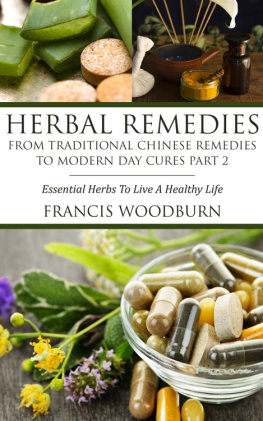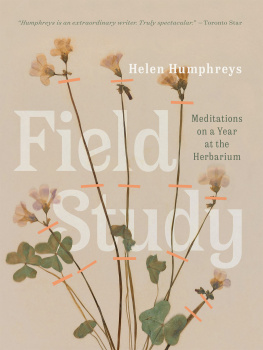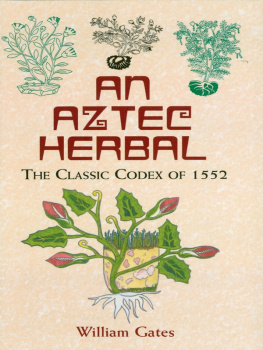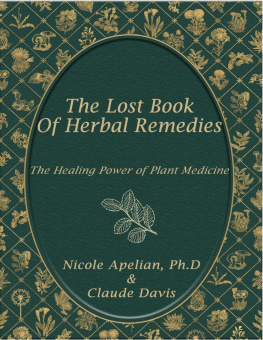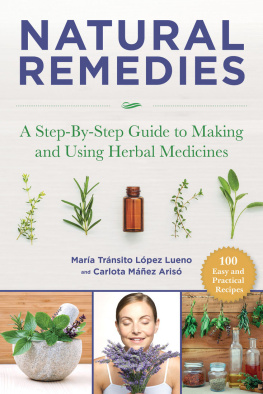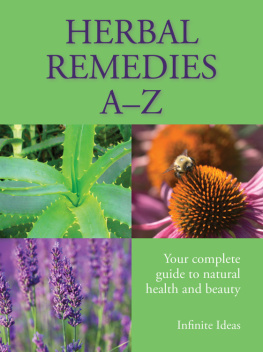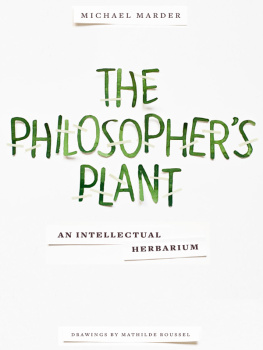Acknowledgments
My heartfelt thanks go to Professor Michael MacMahon of the University of Glasgow for his unselfish assistance in helping to obtain often hard-to-find information about Oswald Cockayne, for sharing his knowledge about the nineteenth century, and for his continued encouragement with my work. I thank Professor Maria Amalia DAronco of the University of Udine for supplying me with vital materials related to the Old English Herbarium and for sharing with me her knowledge of medieval herbals and philology. It was generous of Prof. DAronco to send me unpublished material to use and to help me from afar. I am indebted to Professor Linda Ehrsam Voigts of the University of Missouri at Kansas City for her guidance and encouragement as this work progressed. I am grateful to Stephanie Ball, M.D., for her willingness to answer questions about medical conditions and medical practices as well as for her enthusiasm about medieval medicine.
I thank the professors at the University of New Mexico who helped shape this study: in particular Drs. Helen Damico and Donald Sullivan, and Drs. David Bennahum, Patrick Gallacher, Claire Waters, and Gail Houston. Hats off to the staff of Interlibrary Loan at Zimmerman Library, University of New Mexico for performing miracles. I am indebted to the College of Arts and Sciences of the university for its award of an academic fellowship supporting my study. My thanks to the staff at Harvards Houghton and Widener libraries for their helpfulness in the fall of 1998 while I was using the Cockayne collection. I am grateful to Professor Peter Bierbaumer of the University of Gratz for giving me copies of his out-of-print works on Anglo-Saxon botanical terms. At Sandia National Laboratories, for their continued support, I thank Drs. Nancy Jackson and James E. Miller, as well as my supervisors and colleagues there who often accommodated an erratic work schedule so that I could complete this work.
To my wonderful family, thank you all, not only for your support and love through it all, but for the humor that keeps me from taking myself too seriously. Special acknowledgment to my brothers Clyde and Bob, my sisters-in-law Sybil and Inez, and to my extraordinary daughters-in-law Lynne and Stacy for their never flagging encouragement, and to Isabelle and those to come, who give us hope for the future. Last but not least in the family, Mephisto, thank you for your long years of comfort. Finally, to Dr. Werner Paul Friederich, of the University of North Carolina at Chapel Hill, and to Johann Wolfgang von Goethe, my appreciation for a lifetime of inspiration.
Index of Plant Names
The number behind the plant name refers to its chapter in the Herbarium, . The Roman numerals are provided for reference to Cockayne, DeVriend, and DAronco and Cameron.
Name in Modern English
Agrimony, (XXXII)
Alexanders, (CVIII)
Alkanet, (CLXVIII)
Alkanet, (XLII)
Artichoke, (CLVII)
Asparagus, (LXXXVI)
Asphodel, (XXXIII)
Asphodel, (LIII)
Aster, (LXI)
Barrenwort, (CLXIII)
Basil, (CXIX)
Basil (wild), (CXIX)
Basil (sweet), (CXXXI)
Betony (wood), (I)
Birthwort, (XX)
Bishops weed, (CLXIV)
Blackberry, (LXXXIX)
Bramble, (LXXXIX)
Bryony, (LXVIII)
Bugloss (vipers), (CLXI)
Burdock, (CXXXIV)
Burdock, (XXXVII)
Butchers-broom, (LIX)
Buttercup, (X)
Cabbage, (CXXX)
Camomile, (XXIV)
Campion, (CXXXIII)
Caper, (CLXXII)
Caraway, (CLV)
Carrot (wild), (LXXXII)
Castor-oil plant, (CLXXVI)
Celandine, (LXXV)
Celery (wild), (CXX)
Centaury, common or lesser, (XXXVI)
Chervil, (CVI)
Cinquefoil, (III)
Cleavers, (CLXXIV)
Clover (hares-foot), (LXII)
Cockspur grass, (XLV)
(CXXX)
Comfrey, (LX)
Comfrey, (CXXVIII)
Coriander, (CIV)
Couch grass, (LXXIX)
Cress, garden, (XXI)
Crowfoot, celery-leaved, (IX)
Cucumber (bitter), (CLXXXV)
Cumin, (CLV)
Cyclamen, (XVIII)
Danewort, (XCIII)
Dill, (CXXIII)
Dittany (white), (LXIII)
Dittany of Crete, (LXIII)
Dock, (XXXIV)
Dock, great water, (XXX)
Dock, (XIV)
Dragonswort, (XV)
Dropwort, (LV)
Dwarf elder, (XCIII)
Eglantine, (CLXX)
Elecampane, (XCVII)
Eryngo, (CLXXIII)
Fennel, (CXXVI)
Fern, (LXXVIII)
Field marigold, (CXXXVIII)
Figwort, (LVII)
Figwort, (XXVIII)
Fleabane, (CXLIII)
Fleaseed, (CLXIX)
Fleawort, (CLXIX)
Garlic, (XLIX)
Gentian, yellow, (XVII)
Germander (sage-leaved), (CLI)
Germander, wall, (XXV)
Germander (water), (CLXIII)
Germander (water), (LXXII)
Gipsy-wort, (LXVII)
Gladiolus, (XLVII)
Goosegrass, (CLXXIV)
Great mullein, (LXXIII)
Greater celandine, (LXXV)
Gromwell (common), (CLXXX)
Ground pine, (XXVII)
Groundsel (common), (LXXVII)
Halwort, (LVIII)
Heartwort, (XX)
Heliotrope, (L)
Heliotrope (white), (CXXXVII)
Heliotrope, (LXIV)
Hellebore (white), (CXL)
Hemp, (CXVI)
Henbane, (V)
Herba heraclea, (LXXIV)
Hogs fennel, (XCVI)
Horehound, (XLVI)
Horehound (black), (CLXXVII)
Horsemint, (XCII)
Horsetail, (XL)
Hounds-tongue, (XCVIII)
Houseleek, (CXXV)
Hyacinth (tassel), (CLXXXIV)
Iris (German or blue), (CLVIII)
Iris, (LXXX)
Ivy, (CXXI)
Ivy, (C)
Kings spear, (XXXIII)
Knee-holly, (LIX)
Knotgrass, (XIX)
Ladys mantle, (VIII)
Land caltrop, (CXLII)
Larkspur, (CLX)
Lavender (French), (CXLIX)
Lettuce, wild, (XXXI)
Lettuce, (CXIV)
Lily, (CIX)
Lions foot, (VIII)
Liquorice, (CXLV)
Lousewort, (CLXXXI)
Lupin, (CXII)
Madder, (LI)
Madder, (XXIX)
Maidenhair, true, (XLVIII)
Maidenhair, common, (LII)
Mallow, (XLI)
(CXXXII)
Marguerite, (CXLI)
Marigold, (CXXXVIII)
Marjoram (sweet), (CXLVIII)
Marjoram (wild or sweet), (CXXIV)
Marshmallow, (XXXIX)
Melilot, (CLXXXIII)
Mercury, (LXXXIV)
Mint (horse), (XCII)
Mint (water), (CVII)
Mint, (CXXII)
Mint (brook), (CVII)
Moneywort, (CLXII)
Mugwort, (XI)
Mugwort/tansy, (XII)
Mullein (great), (LXXIII)
Narcissus, (LVI)
Navelwort, (XLIV)
Nepeta, (XCV)
Nettle, (CLXXVIII)
Nettle-leaved belleflower, (LVI)
Nightshade (black), (LXXVI)
Onion, sea, (XLIII)
Orchid, wild, (XVI)
Orchis, (XVI)
Orpine, (CXLVII)
Oxeye daisy, (CXLI)
Parsely, (CXXIX)
Parsley (horse), (CVIII)
Parsnip, (LXXXII)
Parsnip (water), (CXXXVI)
Pellitory-of-the-wall, (LXXXIII)
Pennyroyal, (XCIV)
Peony, (CLXXI)
Peony, (LXVI)
Periwinkle (greater), (CLXXIX)
Plantain (common), (II)
Plantain (narrow-leaved), (XCVIII)
Polygermander, (LVIII)
Polypody, (LXXXV)
Purslane (wild), (CV)
Ribwort, (XCVIII)
Rosemary, (LXXXI)
Rue, (CXXVII)
Rue, (XCI)
Rue (wild), (CXVII)
Saffron, meadow, (XXII)
Sage (wood), (LVIII)
Sage, (CIII)
Sage (wood), (CLI)
Sage-leaved germander, (LVIII)
Savine, (LXXXVII)
Saxifrage, (XCIX)
Marguerite, (CXLI)
Sea-onion, (XLIII)
Sea onion, (CLIX)
Shepherds purse, (CL)
Snakeweed, (VI)
Snapdragon (small), (LXXXVIII)
Soapwort, (CXLVI)
Southernwood, (CXXXV)
Sow-thistle, (CXI)
Sowbread, (XVIII)
Spikenard, (CXLIII)
Spleenwort, (LVII)


